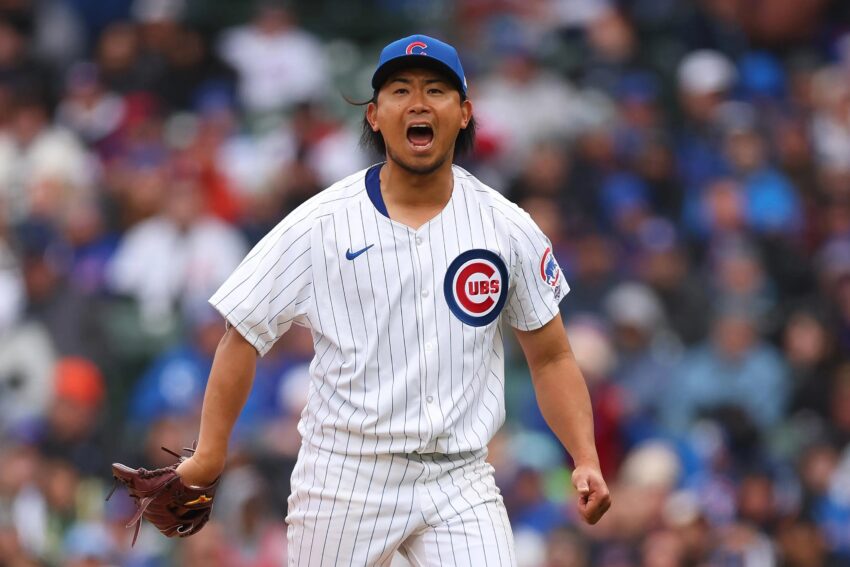Who doesn’t love a creative contract? A player values himself at a certain level, while the team feels otherwise. The team wants cost certainty and downside protection; the player wants long-term security. The team tries not to be held hostage by demands down the road, but the player desires flexibility if he outperforms his projections.
So, smart people sit in a room and hash out a deal that attempts to check every box. It so rarely happens that we need to acknowledge it when it does.
As I have previously written, the Seattle Mariners’ contract with Julio Rodríguez is the gold standard in this regard. But so too was the deal that super-agent Scott Boras negotiated with the Philadelphia Phillies for Jake Arrieta in 2016.
However, a deal that was overlooked at the time, but has come into focus this week, is the one that the Chicago Cubs signed with pitcher Shota Imanaga before the 2024 season.
On its face, the contract was four years, $53 million. Simple enough. To make it slightly more complicated, there was a $1 million signing bonus, a $9 million salary for 2024, $13 million salary for 2025, and $15 million for each of 2026 and 2027. After this season, the Cubs had the right to exercise an option for 2028—yes, three years into the future.
If exercised, the deal would become a three-year, $57 million extension (with 2026 and 2027 salaries rising from $15 million to $20 million, and 2028 set at $17 million). Had Imanaga performed as the Cubs had hoped, $19 million per season for a middle-of-the-rotation starter would have been a good value.
But wait, there is more.
The deal included incentives, and because Imanaga finished fifth in Cy Young voting in 2024, all future salaries went up by $250,000. This made the potential $57 million extension worth $57.75 million.
If the Cubs chose not to exercise their three-year option, the pitcher could stay in Chicago by exercising his own option for 2026 at $15 million (actually $15.25 million, thanks to the Cy Young incentive).
If Imanaga exercised that option to remain with the club for 2026, then the Cubs would have yet another option at the end of the season: a two-year, $42 million deal ($24 million in 2027 and $18 million in 2028).
If the team decided to move on after 2026, the pitcher could still stay by exercising an option for 2027 at $15 million.
Got it?
Well, Shota Imanaga had a pretty mediocre season on the North Side. He went 9-8 with a 3.73 ERA and a 4.86 FIP. His 103 ERA+ was just about average.
In a year when the wind blew in for three-quarters of the Cubs’ home games, he gave up 17 homers at Wrigley Field. His total of 31 home runs allowed was the fourth worst in MLB among 873 eligible pitchers.
The team lost so much faith in him that they opted for a bullpen game in the must-win Game 5 of the National League Division Series against the Brewers rather than throwing the fully rested lefty. The Cubs lost 3-1.
So, the die had been cast. This week, Chicago elected not to exercise their three-year option on the Japanese pitcher. Imanaga, in turn, elected not to exercise his one-year, $15 million option, making him a free agent—almost.
The Cubs still had the ability to make a “Qualifying Offer” to the pitcher, which, if he accepted, would pay him $22.025 million for 2026. If he declined, the team would be entitled to draft pick compensation if and when he signs with another team.
This deal stands as a fascinating example of a creative contract designed to balance the needs and desires of both the player and the team—showing the complexities and strategic thinking involved in modern baseball contracts.
https://bitcoinethereumnews.com/finance/cubs-and-shota-imanaga-decline-options-team-makes-a-qualifying-offer/
